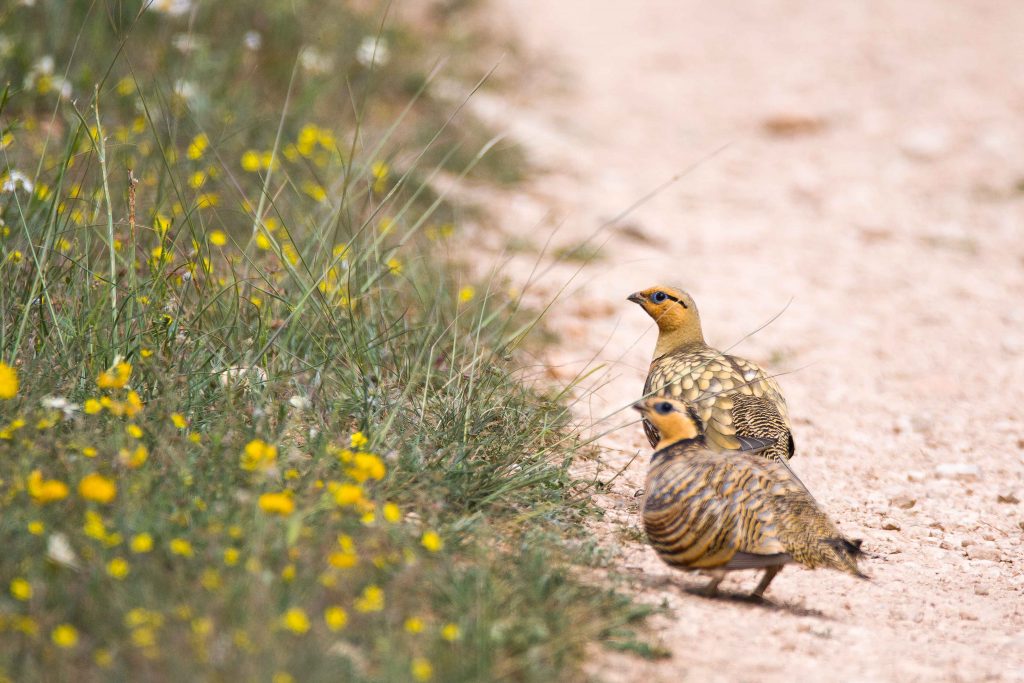Intensive farming is the main cause of bird population decline in Europe
Published in the journal PNAS, an article led by researchers from the University of Montpellier, to which CREAF and the Catalan Ornithological Institute (ICO) have contributed, reveals that the spread of intensive monoculture farming is the main cause of the decline in Europe’s bird populations over the last 40 years. Overall, bird numbers have fallen by 25% in the period in question, but the figure is almost 60% in the case of farmland bird species. The decreases that have taken place differ from country to country, depending on the farming practices used in each case. For example, the regions of western Europe, where crop fields are normally large and pesticide use tends to be intensive, are among the worst-affected areas, in contrast to the continent’s eastern countries, where such practices are less widespread. “That has helped mitigate bird loss,” explains CREAF, ICO and European Bird Census Council researcher Sergi Herrando, who co-authored the article..
Monoculture farming generates homogeneous landscapes that lack plant diversity, offering birds neither refuge nor varied vegetation and fruit to feed on.
According to the study, agricultural intensification has entailed increased use of fertilizers and pesticides. Those products leave soil devoid of insects and other invertebrates, which are a vital source of nutrition for many birds, “particularly in the breeding season, when chicks need a lot of protein,” remarks CREAF-based CSIC researcher Lluís Brotons, another of the article’s co-authors.. Fertilizers and pesticides also contaminate seeds. If birds eat contaminated seeds, toxic substances build up in their body and can eventually kill them. Furthermore, monoculture farming generates homogeneous landscapes that lack plant diversity, offering birds neither refuge nor varied vegetation and fruit to feed on. And, as the article’s authors note, that affects not only typical farmland species, such as the Eurasian skylark and the yellowhammer, but also other species that visit cropland to feed , including birds whose diet is based on invertebrates, such as the barn swallow, and long-distance migrant birds, such as the turtle dove; “the majority of common birds, in short,” sums up Brotons.

The study analysed 170 common bird species, monitored at more than 20,000 sites in 28 European countries over a 37-year period. “The results are unequivocal,” states the article’s lead author, Stanislas Rigal, a researcher from the University of Montpellier. “It is not a local problem; the harmful effects of large-scale crop production, fertilizers and pesticides are present throughout Europe. We need to speed up the regulation of farming practices and implement more sustainable models.”
Climate change
Over the last few decades, as temperatures have risen, there has been a fall of 40% in populations of birds that live in cold environments and of 18% in those that live in hot environments.
The study also gauged how significant climate change, urbanization and changes in forest cover have been in bird population decline. Its results show climate change to be the second most significant factor, after agricultural intensification. Over the last few decades,as temperatures have risen, , there has been a fall of 40% in populations of birds that live in cold environments and of 18% in those that live in hot environments. “The difference is probably due to birds typical of high latitudes and altitudes being less able to cope with heat,” explains Herrando. The study ranks urbanization as the third most significant factor, based on there being fewer and fewer green areas and more and more buildings in cities, with urban bird populations having decreased by 28%. Finally, woodland bird populations have fallen by approximately 18%, despite European forest cover having increased over recent years. The authors attribute that drop to a reduction in forest quality: old-growth forests have been lost and newer forests have less diverse fauna and flora.

“The four anthropogenic pressures we describe in the article have already caused an overall fall of 25% in bird numbers in Europe , and the decline is continuing,” says Brotons. “To stop it, we need transformational changes in European societies ; new political agreements, such as the EU’s Nature Restoration Law, which is currently being discussed in the European Parliament, could help to bring them about,” he concludes.
Referenced article
Stanislas Rigal et al. Farmanland practices are driving bird population decline across Europe. PNAS, 2023. DOI: https://doi.org/10.1073/pnas.2216573120







